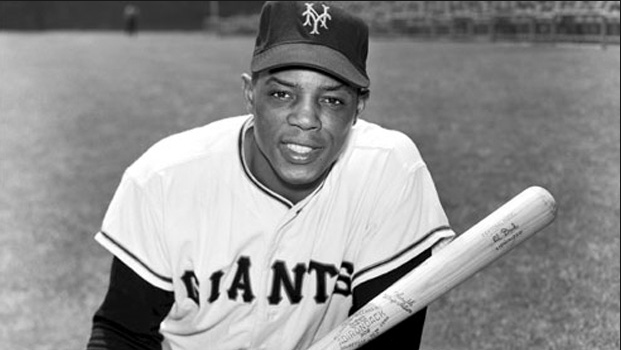
Willie Mays breaks National League home run record on May 04, 1965
Willie Mays breaks National League home run record: On May 4, 1965, San Francisco Giants outfielder Willie Mays hits his 512th career home run to break Mel Ott’s National League record for home runs. Mays would finish his career with 660 home runs, good for third on the all-time list at the time of his retirement.
Willie Howard Mays was born May 6, 1931, in Westfield, Alabama. The “Say Hey Kid” learned baseball from his father, who played semi-professionally with a team from his steel mill. Willie joined the steel mill team at age 14, and then began his professional career at 16 with the Birmingham Black Barons of the Negro Southern League. He played home games for the Barons from 1948 to 1950, skipping road trips during the school year so he could attend high school. Upon graduation he was signed by the New York Giants, and made his debut at the Polo Grounds on May 25, 1951. Mays went hitless in his first 12 at-bats, hitting his first big league homer in his 13th. That season, he was named Rookie of the Year and helped the Giants to the National League pennant.
In 1952, Mays was drafted into the Army. The Mays-less Giants barely missed the pennant in 1952, then felt his absence more acutely in 1953, when they finished the season with a 70-84 record. Upon his return in 1954, the Giants defeated the Cleveland Indians to win the World Series, during which Mays made what many fans consider to be the greatest catch in history. In Game 1, Indian first baseman Vic Wertz hit a fly ball to deep center field. Mays turned and ran, then caught the ball over his shoulder with his back to the infield, spinning and firing the ball back into the infield to keep the runners from advancing. When he was later asked about the play, Mays famously replied, “I don’t rank ‘em, I just catch ‘em.”
After more than 20 years with the Giants, first in New York and then in San Francisco, Mays was acquired by the New York Mets on May 11, 1972. He spent the next two seasons as a Met under former Yankee catcher Yogi Berra as manager. The team won the National League pennant in 1973, though by then, Mays’ skills had eroded, and he could not catch up to the fastballs he once deposited into bleachers on both coasts.
In addition to winning the National League MVP in 1954 and 1965, Mays played in a record 24 All-Star games, winning the All-Star MVP in 1963 and 1968. He was elected to the Baseball Hall of Fame in 1979. His base running, power, fielding, ability to hit for average and outstanding arm in the outfield made him the prototype “five-tool” player for whom baseball scouts search. Any argument over who deserves the title “greatest baseball player in history” has to include Willie Mays.
History Channel / Wikipedia / Encyclopedia Britannica / Biography / Baseball Hall of Fame / Acadamy of Achievement / MLB

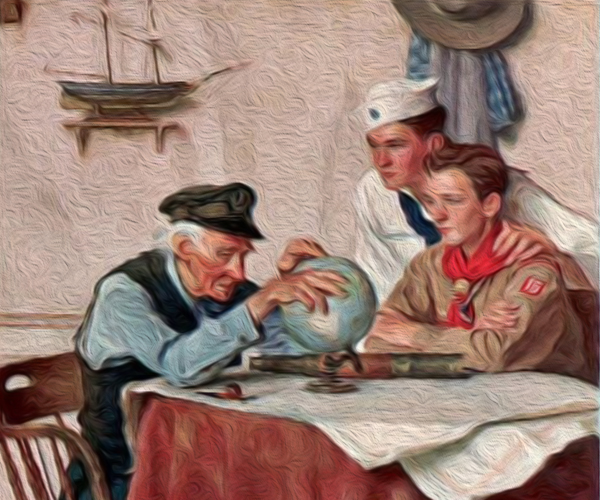
Understanding Military Terminology - Movement phase
(DOD) In amphibious operations, the period during which various elements of the amphibious force move from points of embarkation to the objective area. See also: amphibious force; amphibious operation. Joint Publications 3-02 (Amphibious Operations)
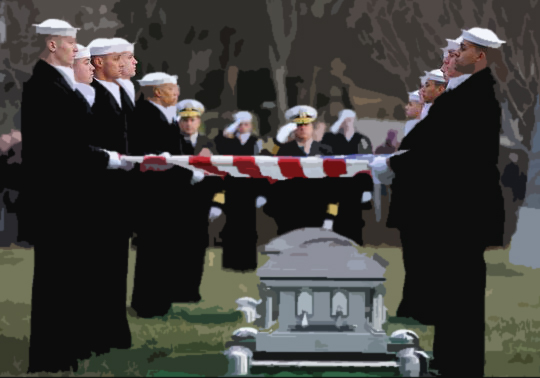
The Old Salt’s Corner
“Bury Me With Sailors”
“I've played a lot of roles in life;
I've met a lot of men.
I've done some things I'd like to think
I wouldn't do again.
And though I'm young, I'm old enough
to know some day I'll die,
and to think about what lies beyond,
Beside whom I would lie.
Perhaps it doesn't matter much;
Still if I had my choice,
I'd want a grave,mongst sailors when
At last death quells my voice.
I'm sick of the hypocrisy
of lectures of the wise.
I'll take the man, with all the flaws,
Who goes through scared, and dies.
The troops I knew were commonplace
They didn't want the war;
They fought because their Fathers and
Theirs Fathers had before.
They Cursed and killed and wept...
God Knows
They're easy to deride...
But bury me with men like these;
They faced the guns and died.
Its funny when you think of it,
The way we got along.
We'd come from different worlds
To live in one were no one belongs.
I didn't even like them all;
I'm sure they'd all agree.
Yet I would give my life for them,
I know some did for me.
So bury me with Sailors, please,
Though much maligned they be.
Yes bury me with Sailors, for I miss their company.
We'll not soon see their likes again;
We've had our fill of war.
But bury me with men like them
Till someone else does more.”
~ Author Unknown

“I’m Just Sayin”
“No precise value has been proposed on a theoretical cognitive limit to the number of people with whom one can maintain stable social relationships, but a commonly cited approximation is 150.” (Simply put evolution is not reversible.)
~ Dunbar's number

“Thought for the Day”
“With malice toward none, with charity for all,
with firmness in the right as God gives us to see the right,
let us strive on to finish the work we are in,
to bind up the nation’s wounds,
to care for him who shall have borne the battle
and for his widow and his orphan,
to do all which may achieve
and cherish a just and lasting peace
among ourselves and with all nations.”
~ Abraham Lincoln

“What I Have Learned”
“Good, better, best. Never let it rest. 'Til your good is better and your better is best.”
~ Saint Jerome

Bizarre News (we couldn’t make up stuff this good – real news story)

EMBDEN, Maine - A Maine town that spends hundreds of dollars annually to replace stolen street signs is again asking residents to consider renaming one of the frequent targets: Katie Crotch Road.
The Morning Sentinel reports a referendum to rename Katie Crotch Road to Cadie Road is being considered in Embden in Somerset County.
Board of Selectman Chairman Charles Taylor says the thefts occur so frequently that “you would think every dorm room in the state of Maine should have one by now.”
New York Daily News (03/05/2016)
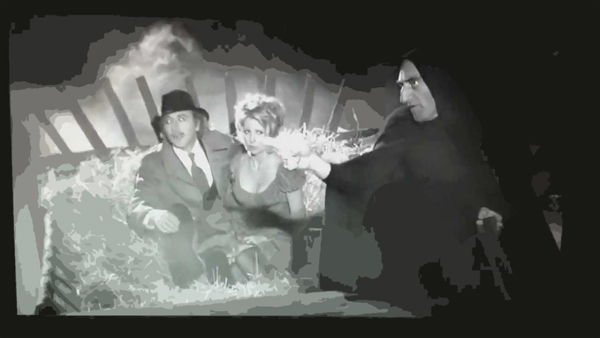
Mr. Answer Man Please Tell Us: How Did English End Up With There / They're / Their?
I don’t care how many degrees you have, how steeped you are in the highest register of formal discourse, how vicious you are with the red pen, how many children’s wrists you have slapped with a ruler. You sometimes write there when you mean their or they’re.
You may catch it every time, correct it before pressing “send,” but you do it. The language just makes it so easy to do. Not only are these three words pronounced exactly the same, they are all constantly in use in everyday discourse. Wait and weight or flour and flower just aren’t as frequent. Most people aren’t going to mix those up. So there’s no reason to be especially proud of not mixing them up, or to make smug memes about them. But there/their/they’re is a cleverly laid, dastardly trap. To tout your mastery of this trio is an act of pride in your ability to skip over the trap.
So who set this trap? We did, of course, which is to say all the English speakers who came before us. First, in the earliest stages of Old English, we had the word for “there”, which was then spelled þǽr (thǽr). The word for “their” was hiera, so there was no problem telling them apart. But when Scandinavian settlers starting coming over around the year 1000, we started borrowing a few things from them, including their word for “their”: þaire (thaire).
Now we had two words with somewhat similar, but still different pronunciations and spellings. The following centuries brought a huge upheaval in English pronunciation through the Great Vowel Shift and the development of Middle and Modern English, while at the same time the spread of the printing press and literacy brought stable spelling conventions into being. Through all this, there at one point or another got the spellings thar, thaire, ther, yar, theer, thiar, and thore. Their went through its own changes with thayir, thayre, yaire, and theer. Sometimes they overlapped and had the same spellings, sometimes they didn’t, but when the dust settled and the final habits had been established, we were left with one pronunciation and two spellings.
The latest entry into the trio was they’re. People didn’t write contractions of this kind until the late 16th century, though they did say them before then. Writers began to use the apostrophe to stand for missing letters, as it does in 'tis or o’er. It couldn’t be helped that “they are” shortened into a word that sounded just like their and there. The same thing happened to I’ll/aisle and we’ve/weave, but aisle and weave didn’t show up often enough to turn the similarity into a trap.
It didn’t have to be this way. If things had gone differently, we might have ended up with one spelling for all of them, or at least for the first two. This is what happened to rose (the flower) and rose (the past tense of rise), or rock (stone) and rock (to sway). Those came from totally different words that began to be pronounced the same, and then came to be spelled the same. (Chaucer wrote of “the son that roose as rede as rose”.) Those words don’t cause any confusion, and neither would a word like ther, if that’s what we had somehow ended up with for all members of the trio.
But that’s not what we ended up with, and so we add there/their/they’re to the long list of things that make writing harder than speaking, things to keep track of, double check, and correct, lest you fall into ther traps. Ther everywhere.
Dictionary.com
• Englisch-hilfen.de
• Grammarist
• Mental Floss
• Wikipedia 
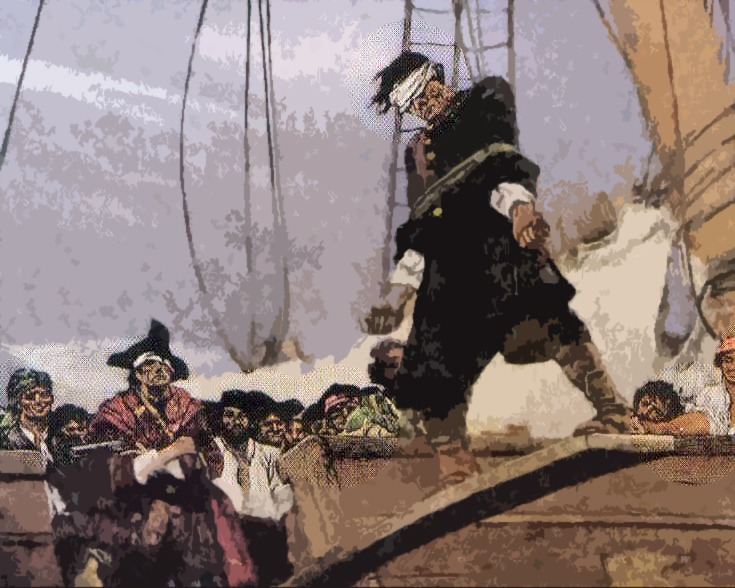
Where Did That Saying Come From?
“Walk the plank:” A form of execution in which victims were forced to walk, often blindfold and with hands tied, off a plank of wood and into the sea.
Origin: “Walking the plank” is as much a part of pirate folklore as eye-patches, peg-legs and squawking parrots, and the scene of hapless victims being prodded by cutlass-wielding pirates and 'walking the plank' to their certain death has often been used as a dramatic device in stories and films. It isn't just a fiction; “walking the plank” was really used as a form of impromptu execution in the 18th and 19th centuries.
Some reports date the phrase from 1769 when it is said that a seaman called George Wood confessed to a chaplain in Newgate Prison the he and his shipmates had forced others to “walk the plank”.
There are documentary records of the phrase's use dating from the late 18th century. Grose's A Classical Dictionary of the Vulgar Tongue, 1788 defined the term:
“WALKING THE PLANK. A mode of 'deftroying' devoted 'perfons' or officers in a mutiny on 'fhip-board', by blindfolding them, and obliging them to walk on a plank laid ever the 'fhip's fide'; by this means, as the mutineers 'fuppofe', avoiding the penalty of murder.”
Phrases.org.UK


NAVSPEAK aka U.S. Navy Slang
JO: Junior Officer.
JO Jungle: Pronounced “J-O Jungle;” term for the berthing assignments of Junior Officers which consist up eight racks and associated berthing facilities. Due to the (more) lax treatment of officers, termed a jungle because of their constant disarray.
JO-JO: Pronounced “joe-joe”. Derragoratory term for a JO.


Just for you MARINE
Kin Town: A small town located just outside Camp Hansen, Okinawa. Also called Kinville or Sinville. Great place to get Taco rice and cheese and Yakisoba.
Kit: another term for the old wb gear (LBE) when it included the butt-pack.
Kuni: Marine Corps Air Station Iwakuni.

Naval Aviation Squadron Nicknames
HSC-7 - Helicopter Sea Combat Squadron SEVEN: “Dusty Dogs”
Naval Station Norfolk - Norfolk, Virginia
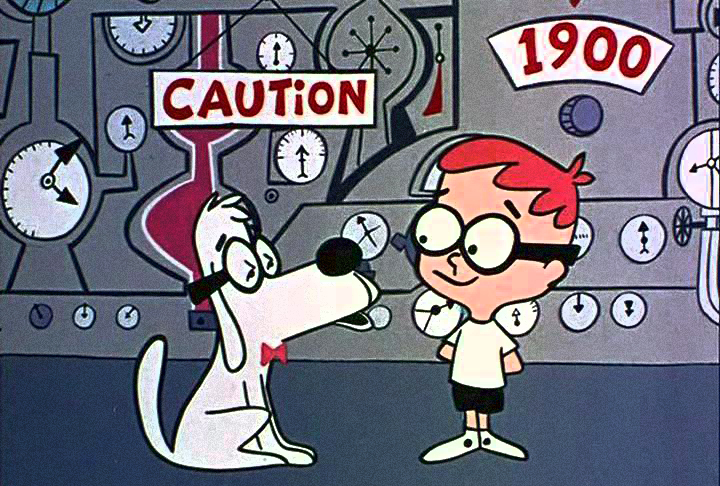
Science & Technology

Stopping killer asteroids costs less than you think
• NASA’s foremost solar system explorer says Europa lander a “necessity”
• Epic CEO: “Universal Windows Platform can, should, must, and will die”
• Law & Disorder: San Bernardino DA says seized iPhone may hold “dormant cyber pathogen”
• Biggest patent troll of 2014 gives up, drops appeal
ARS Technica

The Strange, Mysterious or Downright Weird

After graduating from Norway's Royal Naval School, these cadets wanted to do something special, reports the Daily Telegraph.
So they broke with the formalities to perform Mark Ronson and Bruno Mars' smash hit “Uptown Funk” in a flash mob.
Video posted online shows dozens of the cadets solemnly standing in line to mark the end of the ceremony at their training academy in Stavanger. Huffington Post (03/06/2016)



SONG FACTS
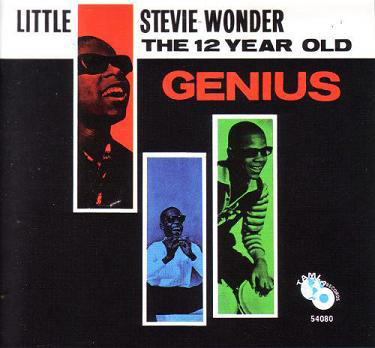
“Fingertips (Part 2)” - Stevie Wonder
Album: The 12 Year Old Genius (Recorded Live)
Released 1963 
This was the first live recording to hit #1 in the U.S., and it has quite a story behind it. Stevie Wonder, just 12 years old, was part of a Motown package tour called “The Motortown Revue”, and was thrilling crowds with his high-energy performances. On March 10, 1963, the Revue came to the Regal Theatre in Chicago, where Wonder's performance was recorded. On this night, he played a highly improvised version of his song “Fingertips”, which went on for about 10 minutes as the crowd went absolutely nuts and the stage manager, concerned because the show was running late, tried to get him off so the next act could perform.
Wonder fed off the crowd and kept going, even doing a little bit of “Mary Had a Little Lamb” on his harmonica. When Wonder ends the song (about 2:05 in), the band starts to clear the stage, and the band for the next act, The Marvelettes, hustles on. At this point, Wonder starts playing again, at which point you can hear the Marvelettes bass player Joe Swift ask “What key?” and the performance picks up again with a little encore played by at least some members of the new band.
Motown released the last 3 minutes of this performance as “Fingertips (Part 2)”, as the B-side of a different performance of the first part of “Fingertips”. Part 2 became the hit, and the single was quickly reissued with Part 2 as the A-side. The song spent 3 weeks at #1 in the summer of 1963 and launched Wonder to stardom.
An instrumental studio version of “Fingertips” was included on Wonder's first album, The Jazz Soul Of Little Stevie, in September, 1962. The song was written by the Motown writers Hank Cosby and Clarence Paul. This version of the song is much more mellow, jazzier and flute-heavy than the famous live version, which plays up the horns and harmonica.
Wonder's first two albums were The Jazz Soul of Little Stevie and Tribute to Uncle Ray, both released in 1962 and intended to frame Stevie as a young Ray Charles. They didn't catch on, but in 1963 Motown released The 12 Year Old Genius (Recorded Live), with two sides of the "Fingertips" single (from different performances) edited together to make one song. The album hit #1 while the single was still topping the Hot 100, making Stevie Wonder the first artist with a #1 album and single at the same time. The song was also a #1 R&B hit at the time.
The words on this song were stuff Stevie Wonder came up with to engage the crowd - Part 1 of the song and the studio version are both instrumental.
This was only the second #1 hit for Motown Records. Their first was “Please Mr. Postman”  by The Marvelettes in 1961.
by The Marvelettes in 1961.
A young Marvin Gaye played drums on this live recording. Gaye had already been a Motown session drummer for a couple of years, and amongst the hits he'd previously drummed on was The Marvelletes #1 song “Please Mr. Postman”  .
.
Berry Gordy gave Wonder the name “Little Stevie Wonder” (his real name is Steveland Morris) and marketed him with Motown Records as a “Genius”. His talent was obvious, but it didn't translate to record, and his first three singles tanked. It took a while for Wonder to develop a studio hit, but he quickly became a top live performer, thanks in part to his time in the youth choir at Whitestone Baptist Church in Detroit. “Fingertips (Part 2)” captured that live energy and established Wonder as a top vocalist and harmonica player, but as he grew up, he developed into a brilliant songwriter, producer and multi-instrumentalist. He dropped the "little" from his stage name in 1964.
Wonder got a lot of attention in the aftermath of this song, but he went though a long dry spell before he had another big hit. By 1965, Motown producers were passing up opportunities to work with him because they couldn't figure out how to translate his talent into a hit recording. The breakthrough came when he began working with Sylvia Moy, who worked with him on the song “Uptight (Everything's Alright)”, which made #3 in 1966.
Stevie Wonder official site / Rolling Stone / Biography / Rock and Roll Hall of Fame / All Music / Billboard / Song Facts / Wikipedia
Image: ““The 12 Year Old Genius (Recorded Live)” (album)” by Stevie Wonder
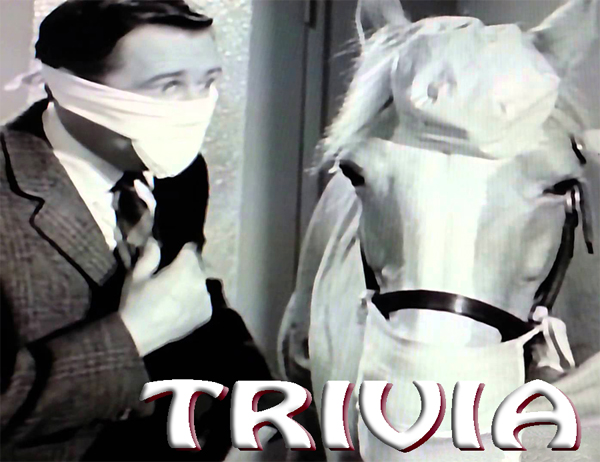
Trivia
● Leukemia sufferers have too many white blood cells, or leukocytes.
● Hypoglycemia is low blood sugar
● A stroke the common term for a cerebrovascular accident.

A Test for People Who Know Everything
Name a word(s) that contain all the vowels in alphabetical order
● Answer for People Who Do Not Know Everything, or Want to Verify Their Answer Wiktionary
Answer to Last Week's Test
List at least three words starting with dw
Answer: dwarf, dweeb, dwell More Words

Joke of the Day
Here is joke for you guys. I thought it was funny.
A man dies, goes to heaven, stands before St. Peter, and see a huge wall of clocks. The man asks what all the clocks are for and St. Peter explains, “These are lie clocks. Everyone on earth has a lie clock. Every time a person lies, the clock hands move.”
Pointing to one, the man says, “Whose clock is that?”
“That's Mother Teresa's”, St. Peter answers. “The hands have never moved, indicating she never told a lie.”
“Incredible”, the man responds. “And whose clock is that?”
St. Peter responds, “That's Abraham Lincoln's. The hands moved twice telling us he told two lies in his entire life.”
“Where my clock?” the man asks.
“Your clock is in Jesus' office”, St. Peter says. “e's using it as a ceiling fan.”
Pun of the Day
Undertakers are nice - they're the last to let people down.


























